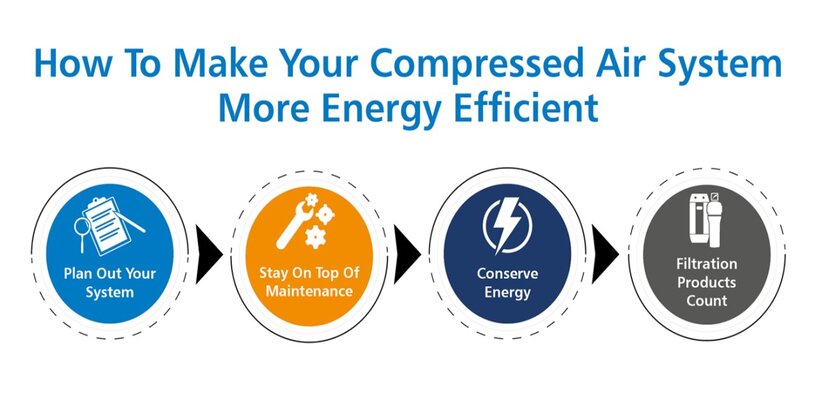Energy Efficiency in Air Compressors: How to Save on Operating Costs
Published on:

The Importance of Energy Efficiency
Energy costs can add up quickly in businesses that rely heavily on air compressors. This blog will discuss strategies to enhance energy efficiency and reduce operating costs. Improving energy efficiency not only lowers your utility bills but also reduces your carbon footprint, contributing to a more sustainable operation.
Choose the Right Size Compressor
Selecting the right size air compressor for your needs is critical. An oversized compressor will consume more energy, while an undersized one will struggle to meet demand, leading to inefficiency. Proper sizing is essential for optimal performance and cost savings.
- Assess your air consumption needs to determine the appropriate compressor size.
- Consult with manufacturers or suppliers for guidance on selecting the right model.
- Consider future growth and potential increases in demand when choosing a compressor size.
- Utilize flow meters to monitor air usage and adjust compressor size accordingly.
Utilize Variable Speed Drives (VSD)
Variable speed drives can help optimize compressor performance by adjusting the motor speed according to demand. This feature can lead to significant energy savings. VSDs are especially beneficial for businesses with fluctuating air demand.
- Implement VSD technology for compressors that experience fluctuating demand.
- Consider retrofitting existing compressors with VSDs for improved efficiency.
- Evaluate the return on investment (ROI) for implementing VSDs in your compressor systems.
- Monitor energy savings after installation to assess effectiveness.
Regular Maintenance
Regular maintenance not only ensures optimal performance but also enhances energy efficiency. Neglected equipment can lead to increased energy consumption and costly repairs.
- Follow maintenance schedules for filters, oil levels, and overall system checks.
- Address any identified issues promptly to prevent further energy loss.
- Clean or replace filters regularly to ensure unrestricted airflow.
- Check for leaks in hoses and fittings, as they can significantly reduce efficiency.
- Ensure that all moving parts are lubricated to minimize friction and energy loss.
Optimize System Layout and Piping
The design of your compressed air system can impact its energy efficiency. Proper layout and piping can reduce energy losses and enhance overall performance.
- Minimize the length of piping to reduce pressure drops and energy losses.
- Use larger diameter pipes to reduce friction and improve airflow.
- Position air compressors close to the point of use to minimize pressure drop.
- Implement a central system to distribute compressed air efficiently throughout the facility.
Consider Heat Recovery Systems
Air compressors generate heat during operation, which is often wasted. Utilizing heat recovery systems can improve overall energy efficiency and provide additional benefits.
- Install heat exchangers to recover heat from compressors and use it for water heating or space heating.
- Evaluate the potential for using recovered heat in other processes within your facility.
- Monitor the effectiveness of heat recovery systems to ensure they are functioning properly.
Conclusion
Enhancing energy efficiency in air compressors can significantly reduce operating costs. By selecting the right size, implementing VSD technology, maintaining equipment, optimizing system layout, and considering heat recovery systems, businesses can achieve substantial savings over time. Investing in energy-efficient practices not only lowers operational costs but also contributes to a more sustainable future.
